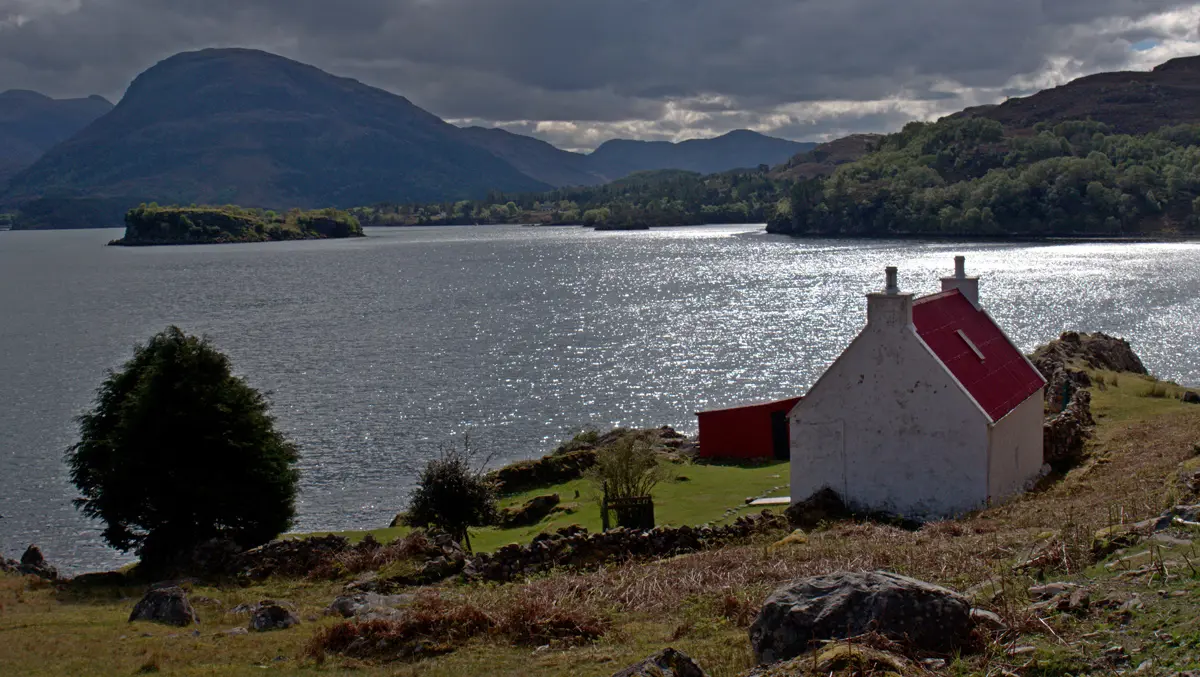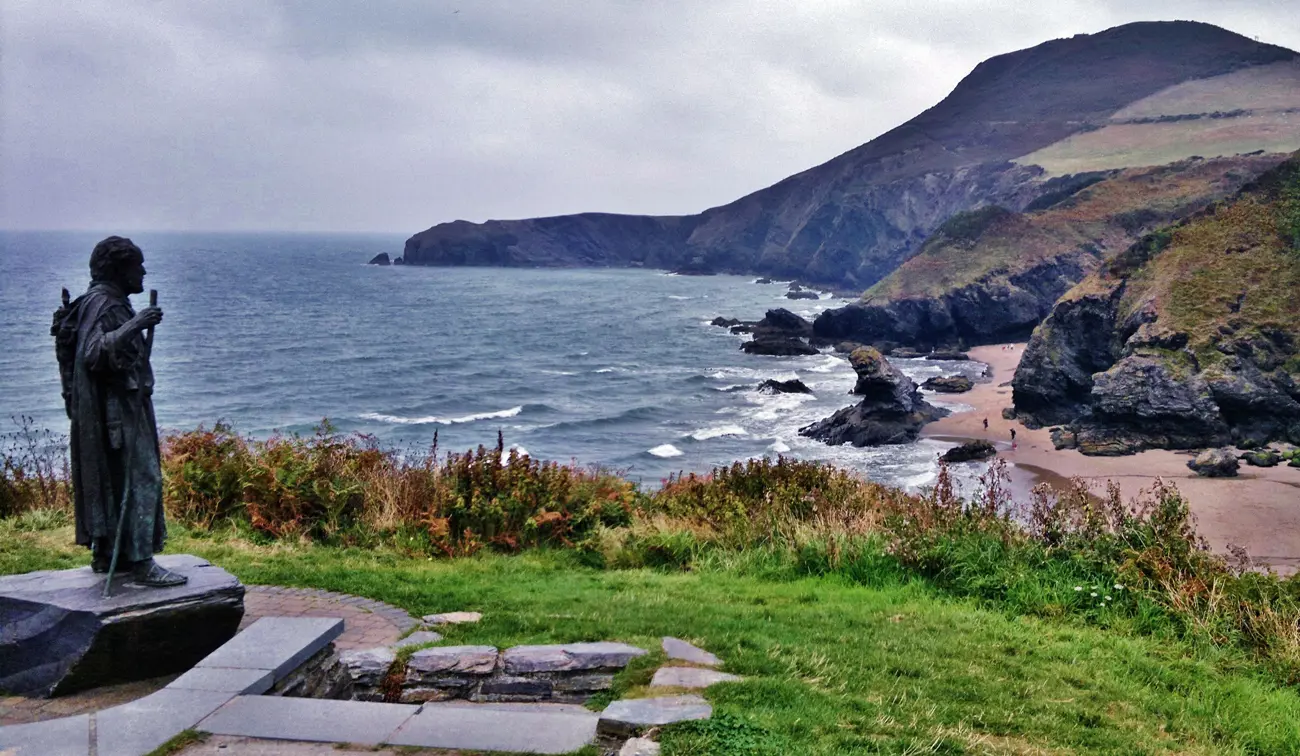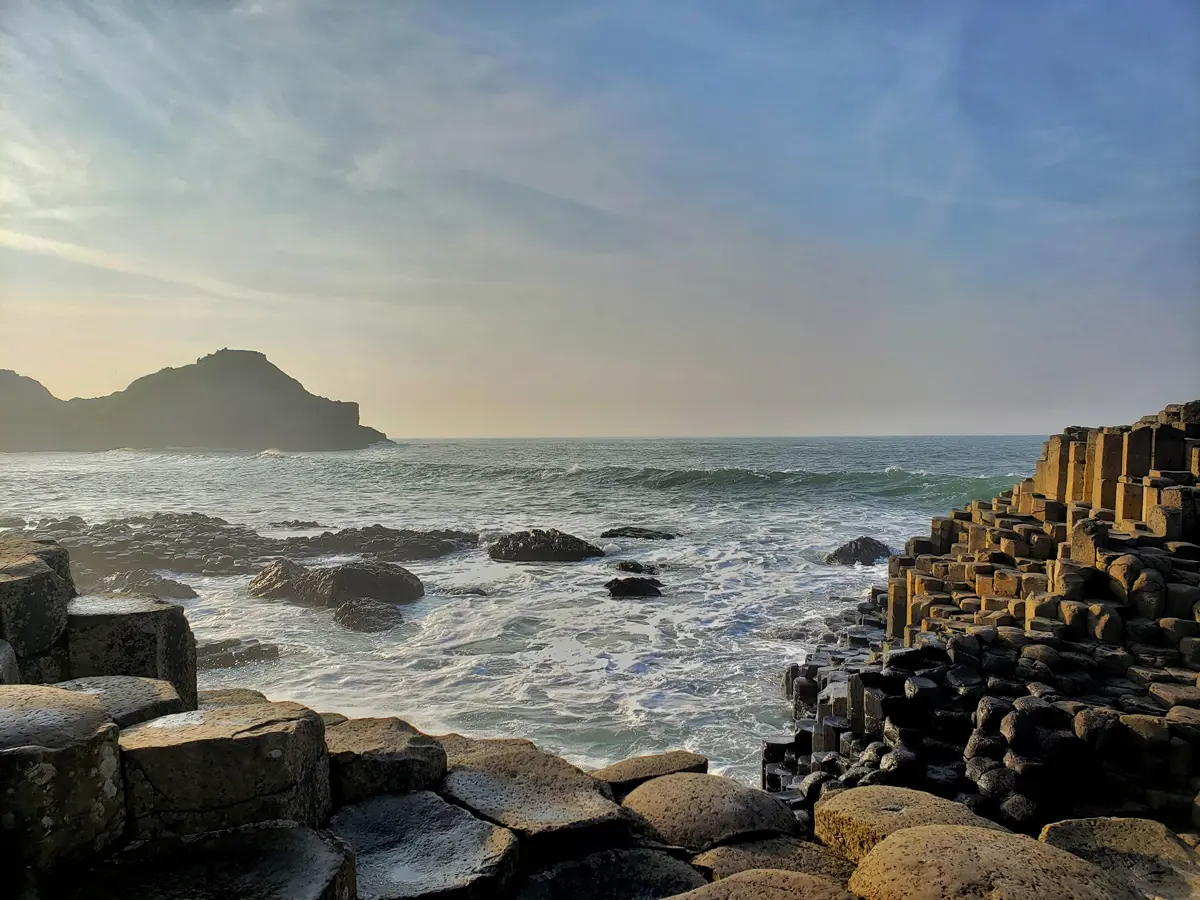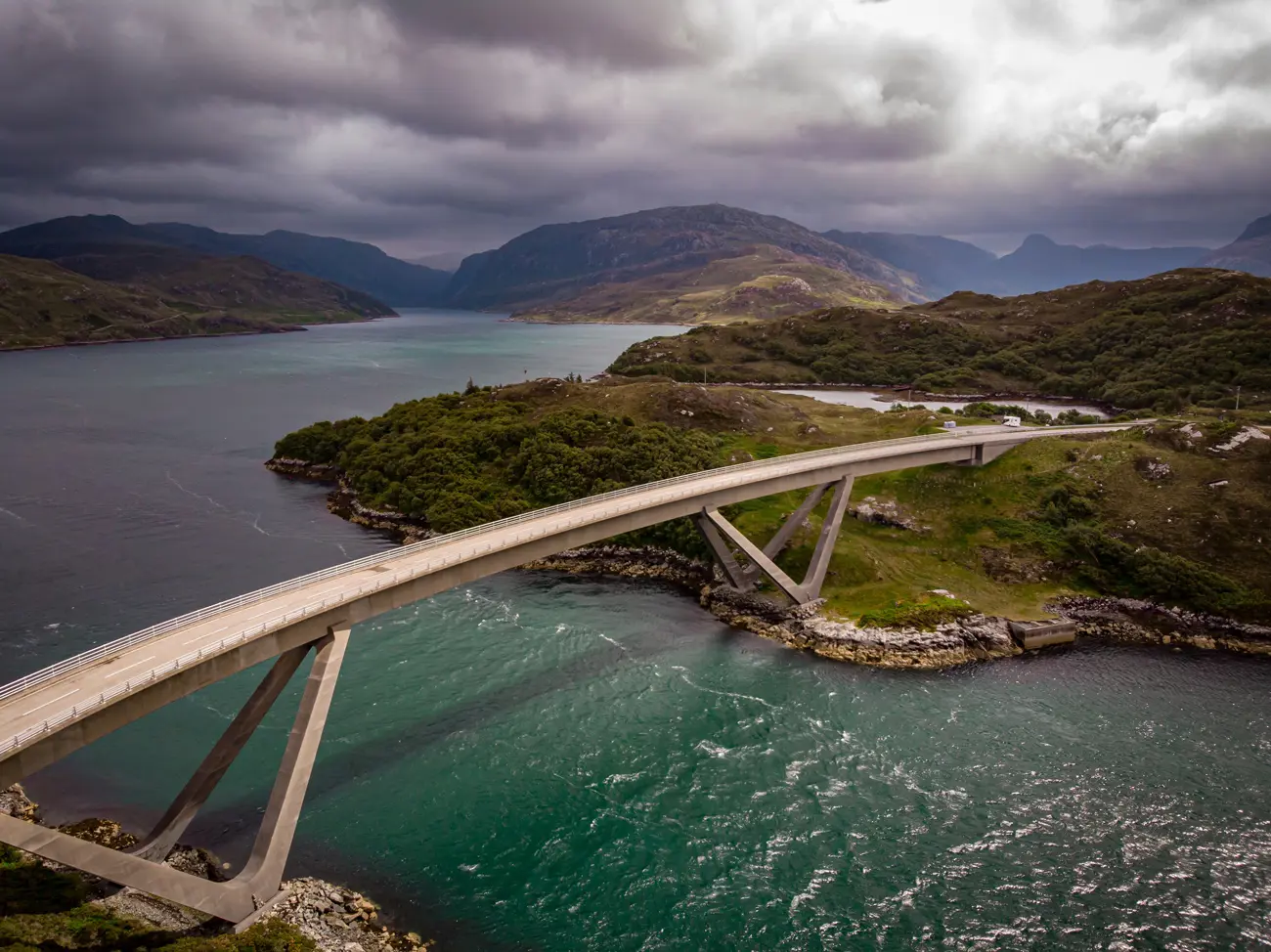Best coastal classic car drives in the UK
08 April 2021

On a list of truly iconic things about the United Kingdom, its coastlines would certainly be near the top.
From the White Cliffs of Dover to the Giant’s Causeway, British coastlines are both steeped in history and endlessly beautiful. It’s a dream for owners of a classic car who live for those escapes, getting behind the wheel and setting off to make unforgettable memories.
In this article, we will explore the crucial elements of a truly great coastal drive. We’ll pick five of our favourite UK coastal destinations from the many on offer. And we’ll also list the essentials to have ready before you get going on your next adventure, from a trusty sat nav to insurance for your classic car.
What makes a great coastal drive?
The perfect coastal road trip is a melting pot of the right ingredients. While you can never fully rely on British weather, there are many parts of your trip you can guarantee with a bit of planning ahead.
The first thing we all want from a coastal drive is those cinematic views. We want to look past the rocks at the piercing blue ocean that stretches out to the horizon.
The kind of view where you can picture the camera swooping overhead from distance as your classic car winds around the coastal roads, like a James Bond movie or an episode of Top Gear!
Next on the checklist are some landmarks that can be the focal point of your drive or act as particularly stunning pit stops.
In the destinations we have chosen below, they were a key factor. The UK coast has an infinite number of landmarks that are worth driving hundreds of miles to see, including medieval castles, golden beaches and geological wonders.
If you’re making a holiday of it, you’ll want the rest of the trip to be just as great. So other important factors include plenty of suitable places to stay the night, cosy pubs and excellent restaurants. Also, if you can fit in some things to do along the way, such as museums or theatres, it would be an added bonus.
Now let’s explore five of the best UK coastal drives.
-
The Coastal Way, Wales
Stretching 180 miles across Cardigan Bay, Wales, The Coastal Way spoils drivers with its views of blue seas and formidable mountains.
This epic route encapsulates the stunning coastlines of the Llŷn Area of Outstanding Natural Beauty, Snowdonia National Park, and is peppered with picturesque towns, fishing villages and resorts.
Bask in the glorious, unspoiled coastlines of Llŷn Peninsula – known as ‘Snowdon’s Arm’ – and stop in local villages like Aberdaron or Nefyn to meet the locals.
Many in the area are native Welsh speakers, so you’ll have plenty of chances to hear the country’s beautiful language. Want to find out more about it? Then you can pop into Nant Gwrtheyrn, the National Welsh Language and Heritage Centre, which is nearby.
The Coastal Way is full of outstanding landmarks to fit into your trip. The stunning Harlech Castle, a UNESCO World Heritage Site, has stood proudly since the 13th century amid a backdrop of the Snowdonia peaks.
Meanwhile, you can enjoy a little break from being behind the wheel with a trip on the Welsh Highland Railway, the UK’s longest heritage railway running for 25 miles from Caernarfon to Porthmadog.
You’re also spoilt for choice with the activities found along the way. Take an exhilarating 100mph zipline across the old slate mines of Penrhyn Quarry, or relax with a round at St. David’s Golf Course, regarded as one of the world’s best – and most challenging – golf courses.

-
The North Devon Coast, England
North Devon’s coastline features some of the most picturesque roads you could find, peppered along the way with breathtaking views, charming villages, and luxury cottages to end each day in style.
One route worth taking is along the edges of Exmoor National Park, from Minehead to Lynton. When you reach Lynton, don’t miss the opportunity to take in the Valley of the Rocks, a u-shaped dry valley known for its jagged-edged rock formations and towering sea cliffs.
You’ll also be able to spot herds of wild goats, often standing literally on the cliff edges.
There are typically plenty of unique events happening throughout the year to give your road trip something extra special. If you’re a foodie, February would coincide with the Exmoor Food Festival, while October / November is usually the time for the Exmoor Dark Skies Festival.
Exmoor National Park is an international Dark Sky reserve, so if you love the idea of stargazing, you could even check into accommodation that has been accredited as ‘Exmoor Dark Sky friendly’. Some of these can be found on or close to the Minehead to Lynton coastal route.
It’s only around 40 miles from Minehead to the Valley of the Rocks, so you might fancy a longer drive after. Thankfully, the region has plenty more to offer. The 70-mile Atlantic Highway takes you from Barnstaple in Devon down to Newquay in Cornwall.
This route offers stunning views of the Atlantic Ocean while being peppered with historical landmarks. Lonely Planet recommends ‘a stunning clifftop castle at Tintagel that's rife with Arthurian connections’.
Remember to fuel up before you head off for the day as petrol stations can be few and far between in this rural location.
-
The Causeway Coastal Route, Northern Ireland
Enjoy views of the North Atlantic ocean as you glide along this incredible route in your classic car.
In 2018, Lonely Planet named the Causeway Coastal Route as the number one region to visit in the world, inspired by its ‘timeless beauty and high-grade distractions’. When you look at what the area has to offer, it’s easy to see why.
With so much to do along the 195-mile Antrim coastal drive, it’s perhaps best to set aside at least a few days to make the most of it.
Starting close to Belfast with the 800-year-old Carrickfergus Castle, you will then encounter the waterfalls of Glenariff and the famous Bushmills whiskey distillery.
Stop to take in the truly wondrous Carrick-a-Rede Rope Bridge, which was first built by salmon fishermen in 1755 and crosses a 100ft drop.
The route has been made globally famous in recent years by the TV series Game of Thrones, where much of the filming was carried out. However, it has always been known for the Giant’s Causeway, a UNESCO World Heritage Site that is the jewel in the crown of the Causeway Coastal Route.
It’s made up of some 40,000 volcanic stone pillars formed around 60 million years ago, although local legend claims they were put there by the giant Finn McCool in an attempt to reach Scotland.
These are just some of the amazing attractions along this stretch of road. You’re also spoilt for choice in terms of places to eat, charming pubs, and luxury places to stay. And if you’ve got your classic car insurance in place, you’ve got it all!

-
The Norfolk Coast Path, England
Over to the east coast of England to a region brimming with culture, wildlife and geological wonder – perfect for an inspiring road trip.
The Norfolk Coast has its own Area of Outstanding Natural Beauty, alongside hundreds of miles of breathtaking coastline. It’s also home to many nature reserves, where wildlife enthusiasts can see grey seals, black-headed gulls, and many more.
Starting in King’s Lynn and ending in Mundesley, the 70 miles of road on the Norfolk Coastal path are estimated to take around two and a half hours to drive across. If you do fancy stretching your legs on the iconic walking trails, there are plenty of car parks along the route.
You’ll encounter the eye-catching red and white striped cliffs at Hunstanton beach and unspoiled countryside in Brancaster. Stargazers will be keen to stay the night at Kelling Heath Holiday Park, an official Dark Sky location.
Here, National Trails says the light pollution is so low that you can see the Milky Way with the naked eye. How romantic!
Road trippers can also stop off in Cromer, an ancient fishing town and seaside resort. Enjoy a portion of fresh, locally-caught crab and relax on the pristine, sandy beaches.
One of the town’s highlights is the Parish Church of St Peter and St Paul, built in the 14th century with a 160ft high tower.
-
The North Coast 500, Scotland
Now up to the North Highlands of Scotland for a road trip that will require much more fuel.
The North Coast 500, billed as Scotland’s answer to Route 66, is an epic road trip covering just over 500 miles of coastline. It starts and ends at Inverness Castle, encapsulating everything that’s special about this incredible country along the way.
The breathtaking views have always been there, but were really brought to the world’s attention by Prince Charles’ North Highland Initiative, which devised the North Coast 500 route in 2015. Given the scale of this road trip, it’s recommended to set aside at least a week to do it justice.
From the peaks of the Torridon mountains to the Redpoint beaches overlooking the Isle of Skye, there are breathtaking sights with every turn – it might be hard to keep your eyes on the road! On top of this, you’ll encounter an incredible amount of historical and cultural landmarks.
Immerse yourself in the iconic location of John O’Groats, the most-Northern part of mainland Scotland. Here, you might even be able to spot some rare wildlife, including dolphins, seals and puffins.
Meanwhile, catch sight of wild leaping salmon at Rogie Falls, roam the stately gardens of Dunrobin Castle, or enjoy a relaxing stop in the little town of Ullapool.
It can be overwhelming to plan a drive along such a mammoth route, but the North Coast 500 website can be incredibly useful.
It includes an interactive map of all the places you can stay or eat, any historical or heritage sites, and can even show you all the dog-friendly locations to take advantage of.

What to check before setting off
When we think ahead to the dream coastal road trip, we all picture that moment: having the top down or the windows open wide, with the cool breeze in our hair. Wherever you go in your classic car, you’ll want to make it an unforgettable trip with no regrets.
With that in mind, it’s a good idea to make a checklist before you set off. This can help you make sure your drive goes as planned, and prepares you for any bumps in the road.
Firstly, given the wealth of exciting attractions and activities on the UK’s best coastal drives, having an itinerary will give you the best chance of seeing and doing all the things you had planned. You can prioritise the real bucket list parts of your trip and have a schedule to keep you on track.
Secondly, as beautiful as your classic car may be, make sure there will be no issues that leave you stuck at the side of the road. You’re about to take an older car on a long drive, so don’t wait until the middle of the trip to discover any problems.
Keep the vehicle well-maintained and regularly checked to reduce the risk of issues like flat tyres, brake failure, overheating or electrical problems. Also, check that your classic car insurance includes breakdown cover.
Then you should check off your list of key items. You might enjoy the nostalgia of an old-school map, but a sat nav could be your best friend in new and challenging surroundings.
Check the weather beforehand and make sure your car is prepared – can you easily get the roof back up if there is a sudden downpour?
Protecting your classic car on the coast
When taking your beloved classic car out on a road trip, it’s important to protect it. A specialist broker can ensure your classic vehicle insurance is tailored to your individual needs. And if you do have any mishaps, you’ll be able to get through it and get back to your dream holiday.
More than 96,000 classic car owners trust Lancaster Insurance with their classic car insurance. That’s because we’re passionate about classic cars and ensuring owners of them are suitably covered.
Get a quote for classic car insurance today.
Policy benefits, features and discounts offered may very between insurance schemes or cover selected and are subject to underwriting criteria. Information contained within this article is accurate at the time of publishing but may be subject to change.
